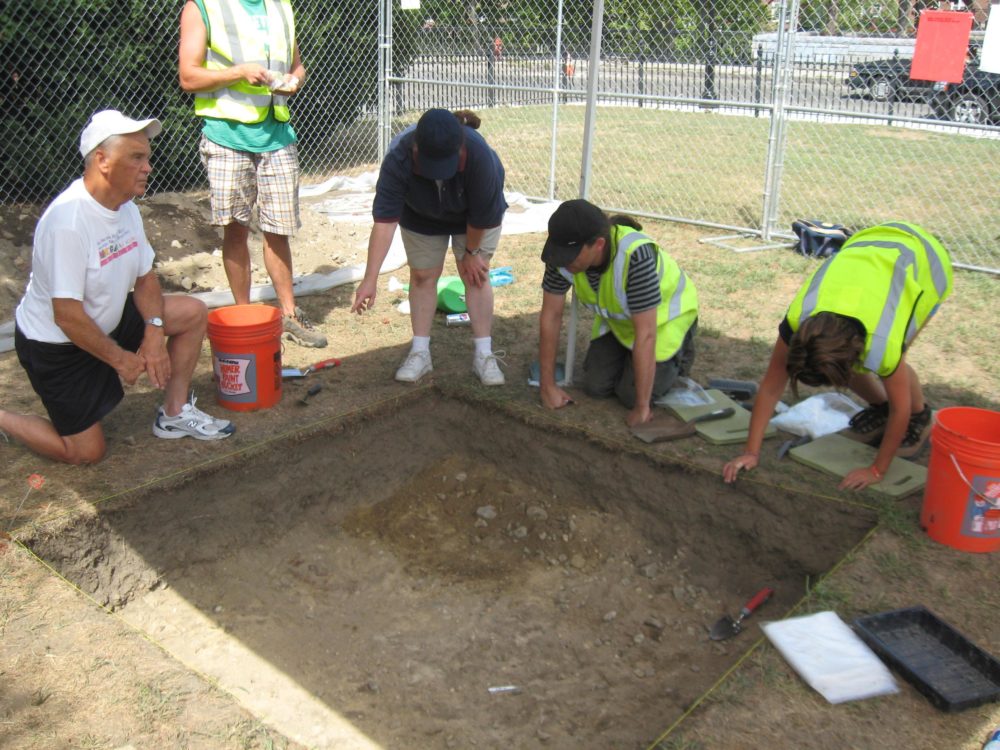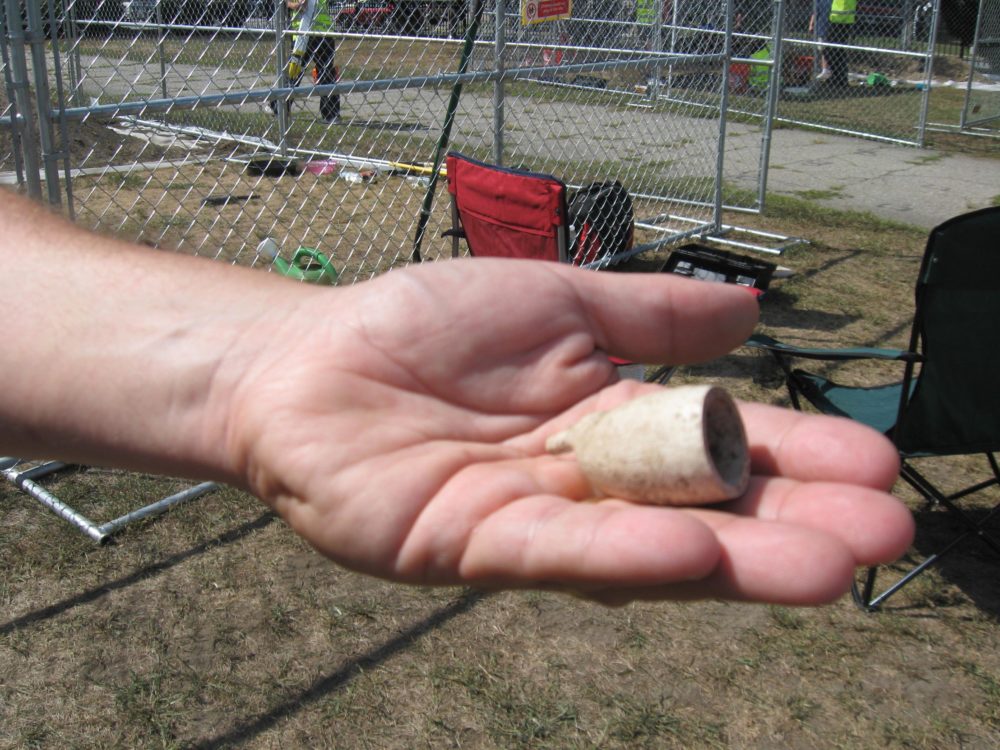Advertisement
Irish Archeologists Search For Their Countrymen In Lowell
Resume
Blame it on Indiana Jones and King Tut.
When we think archeology, we think relics of the distant past, guys in pith helmets traveling to far-off lands, and unearthing objects from a millennia of dirt and sand. In reality, archeology is often more recent and closer to home. It goes wherever the mystery is.
Case in point: In the 1820s, the first band of Irish laborers walked north from Boston to Lowell. There, they widened the canal system that powered the mills and helped turn Lowell into the nation's biggest industrial city by the mid-19th century. But other than their work, we know almost nothing about these pioneers, or the life they lived.
This week, archeologists have been digging for clues in the Acre, the tiny, dense neighborhood north of downtown Lowell where the Irish first settled.
"They were working-class people. They did not write down their stories, they were too busy working and then dying."
David McKean, Saint Patrick's Church archivist
The Acre continues to be stop No. 1 on the immigrant parade that's been marching through Lowell for almost two centuries. The Irish, Greeks, French Canadians, Puerto Ricans, Vietnamese and Cambodians have each deposited churches, homes and shops on top of each other in this tightly set place.
In the Acre, you can see the strata of history and culture at every turn. It reminds me of Istanbul. And while its past may not be nearly as distant, it is no less mysterious.
"I attended Saint Pat's. My family is third, fourth generation in the Acre," said Saint Patrick's Church archivist David McKean as he watched archeologists dig up the front lawn of his church.
"Growing up here you always heard the stories of the Irish laborers settling in the paddy camps, and whenever you said, 'Well, where are they, who were they, what were they doing?' you never got a straight answer, because nobody knew," McKean said. "They were working-class people. They did not write down their stories, they were too busy working and then dying."
Here's who did have time to write stuff down: The Yankee mill owners who set the Acre aside for their Irish laborers in the 1820s. According to their records, this area used to be a dense shantytown. Now, just about every inch of the place has been covered up by successive development. Every inch, except for the green in front of Saint Patrick's, which was built in 1854.
"We know that from the time it was open, this was lawn," McKean said. "So, what was here before that? That's what they're digging to find out."
I asked him if he'd ever found anything digging around the lawn as a child. "No. Weren't allowed to dig," McKean laughed. "We weren't allowed to even walk in the churchyard, are you kidding?"
Well, they're allowed to dig now. Two squares of earth have been opened up in the lawn, each just about wide and deep enough to lie in.
Archeologist Ronan McHugh showed me where they'd just cleared away some of the top soil.
"Here we have what looks like a corroded metal object," McHugh said. "It may just be the base of a pot or something, but of course we haven't lifted it yet, so we're not certain."

The object looked to me as if it would crumble like an old piece of paper if touched.
"Certainly something like this has got to be lifted with great care," McHugh said. "Clearly it will fragment. It's been in the soil for quite some time and its condition isn't great."
McHugh is with a team of archeologists from Queen's University in Belfast, which is here working the excavation with students from University of Massachusetts Lowell. The two institutions inked a wide-reaching collaboration agreement last year.
"Most of the hard work has been done by the local students on behalf of the Queen's University staff here, but we're certainly impressed with their efforts so far," McHugh said.
Students like Eunice Delice, from Methuen, who just finished up a bachelor's degree in political science at UMass Lowell, and is starting her master's in the fall. She got on the dig by writing an essay in which she argued the project would strengthen ties between the university and the surrounding community.
As she sifted through the soil, I asked Delice how far she'd had to dig before she found anything.
"Not far, actually," she said. "After taking off the grass layer, within the first layer we started to find some things. We found rosary beads, marbles."
They also found clay pipes and pottery.
"We've got a really good array of artifacts which will help to build up a picture of life here in the Acre during the 19th century," said Colm Donnelly, the project director from Queen's University.
Based on these modest discoveries, Donnelly now knows that while his great great grandparents suffered potato blight in Ireland, their cousins who had fled for America were feasting on oysters and meat.
"We've got oysters, and we've got also animal bones," Donnelly said. "We can see that the animal bone has been butchered."
According to those Yankee records, as many as 400 Irish lived in the Acre by the 1830s.
"Living conditions would have been squalor whenever the camp was first set up (with) tents," Donnelly said. "And these guys are just hardened laborers who've come down, but they start bringing their families with them, and then they start building the houses. They have a school, the next thing they do is the church. So you've got people here trying to better themselves over the period of a decade. It comes from being a pioneering shantytown to being the makings of an urban environment."
The real findings will come in the months ahead as artifacts are analyzed in labs all over the world. This dig wraps up at the end of the day Friday, but it's just part of a series of excavations that Queen's University and UMass Lowell is undertaking this summer on both sides of the Atlantic.
"We'll be looking at the Irish in 19th-century Ireland," Donnelly said, "and then we'll be looking at the Irish in 19th-century United States, to see what happened whenever they came across here, looking at this aspect of our shared past."
"Reuniting the Diaspora?" I asked him.
"Absolutely," Donnelly replied with his wistful Irish lilt. "It's a nice idea."
This program aired on August 20, 2010.